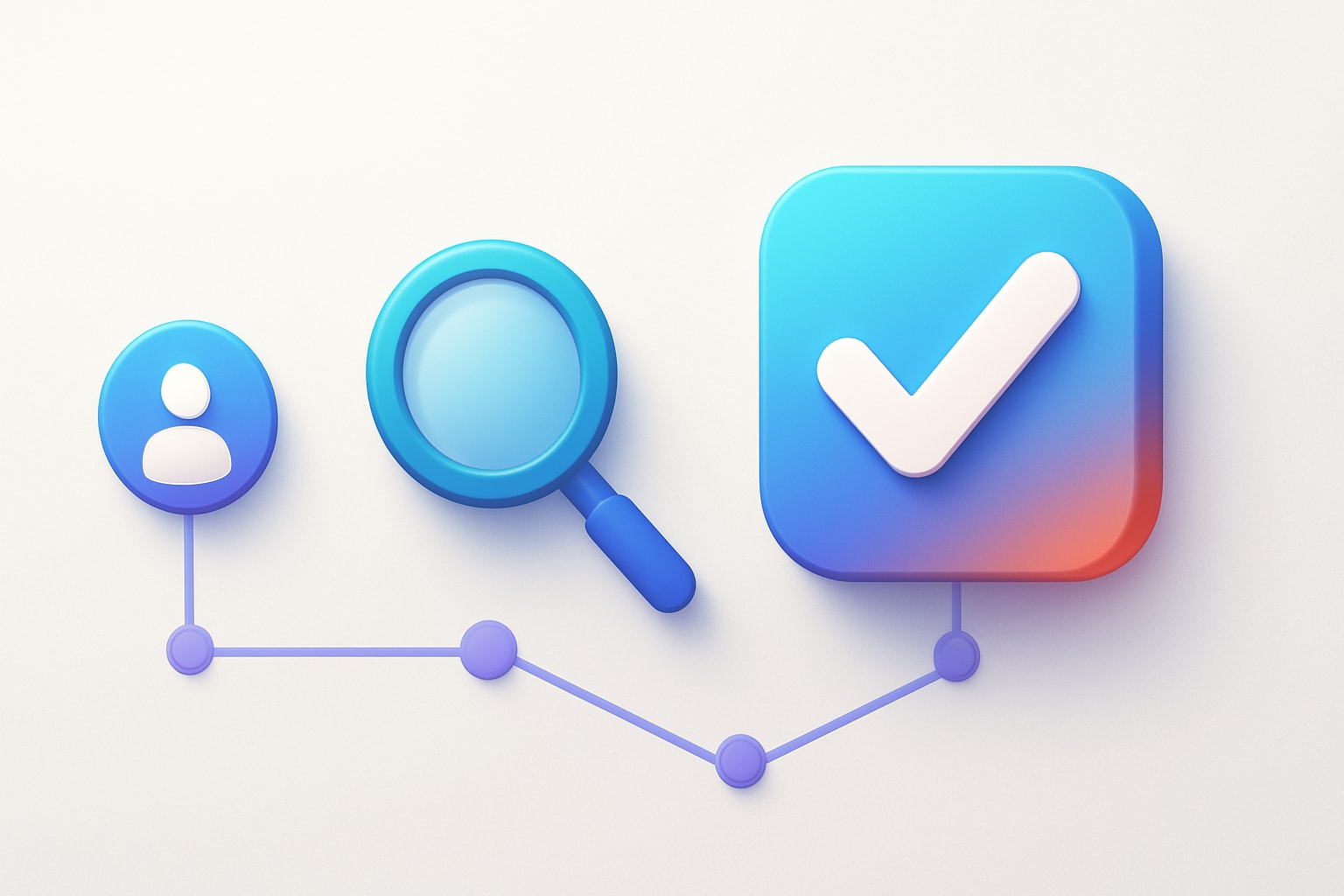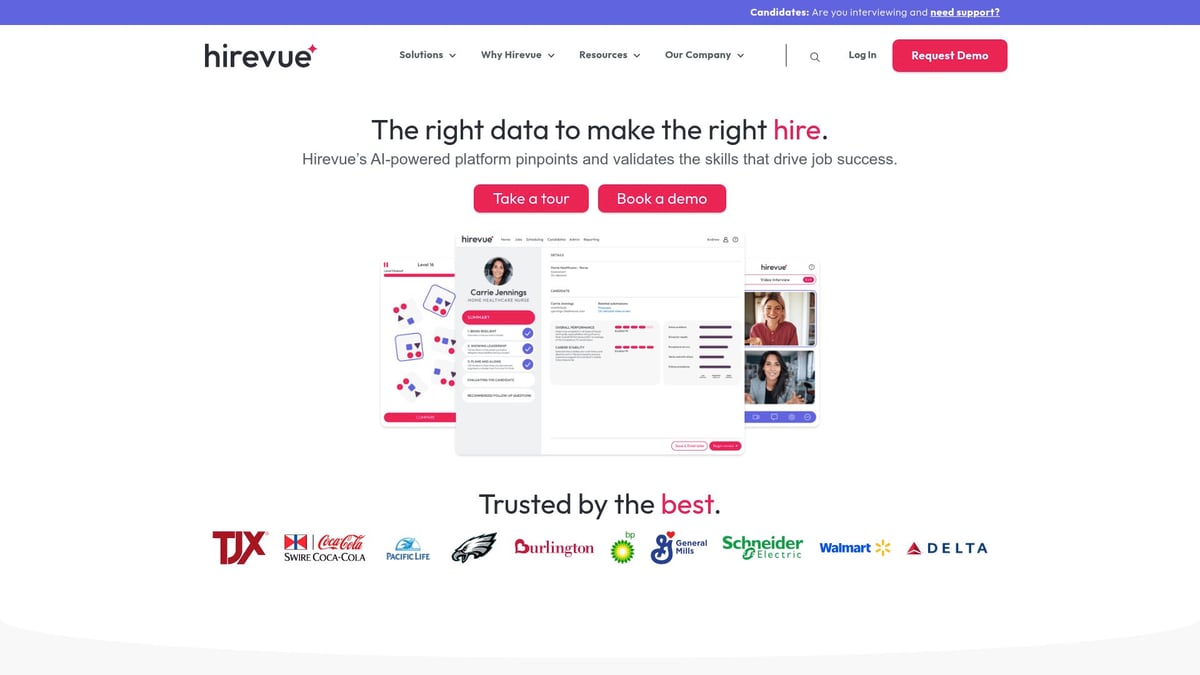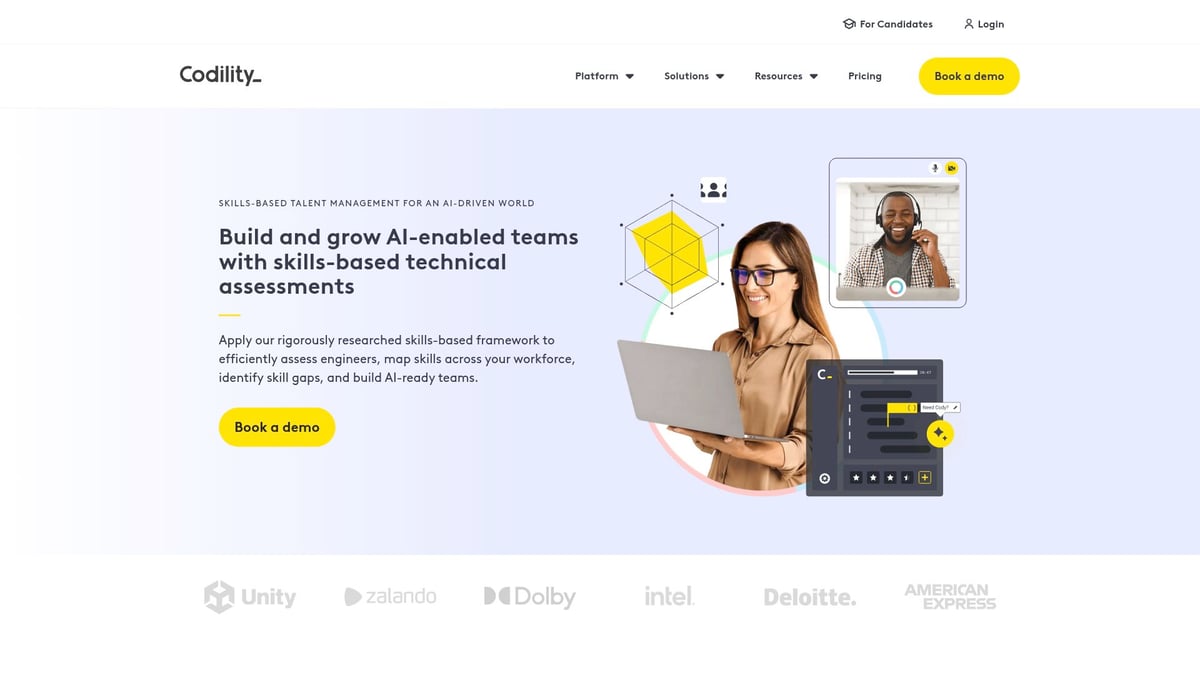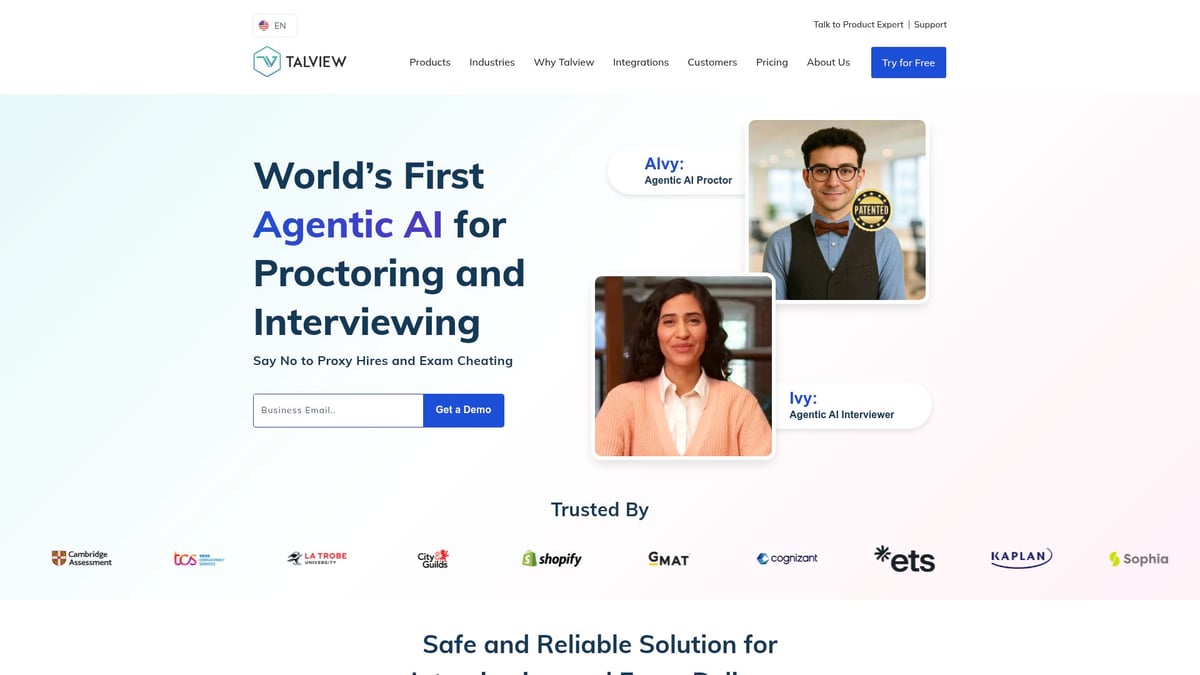November 10, 2025
7 Essential Talent Screening Software Picks for 2025

In 2025, organizations face intense competition to attract and hire top talent quickly. Traditional screening methods are often slow, expensive, and prone to bias, making it harder than ever to identify the best candidates efficiently.
To address these challenges, talent screening software is transforming recruitment by leveraging AI and automation. These advanced tools streamline the hiring process, reduce errors, and improve decision-making.
This article explores seven essential talent screening software solutions, examining their features, pricing, and use cases to help you elevate your recruitment outcomes in the year ahead.
Why Talent Screening Software Is Essential in 2025
The landscape of recruitment has shifted dramatically, and organizations face mounting pressure to secure top talent faster and more efficiently than ever. Traditional hiring processes often introduce bottlenecks, with manual screening consuming valuable time and increasing the risk of human error. In 2025, the need for advanced solutions is clear, and talent screening software has emerged as a critical asset for forward-thinking HR teams.
With the rise of remote and hybrid work, candidate pools have expanded well beyond local markets. This growth makes it harder to evaluate applicants consistently and at scale. Talent screening software enables recruiters to manage larger volumes of applications, filter candidates based on objective criteria, and ensure no qualified applicant is overlooked. These platforms support data-driven decision-making, helping companies remain competitive in a globalized hiring environment.
Efficiency is a driving force behind the adoption of talent screening software. According to recent AI adoption in recruitment statistics, 67 percent of recruiters report that automation tools significantly accelerate the hiring process. Companies leveraging these platforms can reduce time-to-hire by up to 50 percent and minimize operational costs associated with lengthy manual screening. The result is a streamlined process that benefits both employers and candidates.
Another vital advantage of talent screening software is its role in reducing unconscious bias and promoting workplace diversity. AI-powered screening tools are programmed to evaluate candidates based on skills and experience, minimizing the influence of subjective factors. Many solutions also offer compliance features that help organizations stay aligned with evolving labor laws and data privacy requirements. This ensures fair, transparent, and legally compliant hiring practices across all stages of recruitment.
Real-world examples highlight the transformative impact of talent screening software. Companies using these platforms often report improved quality-of-hire, lower turnover rates, and a more inclusive workforce. As candidates increasingly expect a seamless, tech-enabled hiring journey, organizations that invest in modern screening solutions position themselves as employers of choice and set the standard for recruitment excellence in 2025.
7 Essential Talent Screening Software Picks for 2025
The right talent screening software can redefine your hiring strategy in 2025. This section introduces seven standout platforms, each designed to streamline the recruitment process, minimize bias, and boost your team’s efficiency. As you explore these options, you’ll see how each solution addresses unique needs, from technical hiring to high-volume screening and global compliance.
Klearskill
Klearskill stands out in the talent screening software landscape for its advanced use of AI to analyze CVs and rank candidates. The platform automates shortlisting, helping recruiters quickly identify top talent with minimal bias. Klearskill’s customizable scoring system lets users define what matters most for each role, ensuring the process aligns with unique organizational needs.

The software supports seamless integration with major Applicant Tracking Systems, making it a scalable choice for both SMEs and large enterprises. Klearskill offers tiered pricing, so organizations can start small and expand as hiring needs grow. Its user-friendly interface makes it accessible even for teams new to automated screening, while advanced features provide depth for experienced HR professionals.
Unique aspects include real-time candidate ranking and the flexibility to adjust criteria on the fly. This adaptability is critical for businesses seeking agility in a fast-moving job market.
Ideal users for Klearskill are recruitment agencies and HR teams looking to accelerate hiring without sacrificing quality. The platform is especially effective for roles where CV-based evaluation is the standard.
Pros include impressive speed, high accuracy, and intuitive navigation. Cons to consider are its focus on CV-based roles, which may not suit every job type, and a learning curve for unlocking advanced capabilities. For a deeper dive into how automated tools like Klearskill transform the resume screening process, see this resource on Automated resume screening software.
Klearskill’s approach to talent screening software is both practical and innovative, offering measurable improvements in time-to-hire and candidate quality.
Harver
Harver delivers a comprehensive talent screening software solution tailored for high-volume hiring environments. Its platform features pre-employment assessments, situational judgment tests, and video interviewing, allowing recruiters to evaluate candidates at scale without compromising depth.

The software’s modular pricing model lets organizations select only the features they need. This flexibility appeals to large enterprises and BPOs managing thousands of applications for entry-level positions. Harver’s workflow customization stands out, enabling recruitment teams to tailor the candidate journey from application to offer.
A key strength of Harver is its robust analytics dashboard, providing actionable insights into pipeline health and candidate performance. The candidate experience is also prioritized, with streamlined assessments and quick feedback loops.
Unique to Harver is its extensive assessment library, which covers both cognitive and behavioral skills. Seamless integrations with leading HR systems reduce manual effort, making the platform a true end-to-end solution.
Pros include a wealth of validated assessments, powerful automation capabilities, and comprehensive reporting. The cons are a higher price point and potential complexity for smaller businesses with limited resources. However, for organizations with demanding hiring volumes, Harver’s talent screening software brings both efficiency and consistency to the recruitment process.
Harver is ideal for companies needing to process large applicant pools quickly while maintaining rigorous standards.
HireVue
HireVue has redefined talent screening software with its pioneering use of video interviewing and AI-driven assessments. The platform enables recruiters to conduct on-demand interviews, allowing candidates to respond at their convenience and reducing scheduling challenges.

HireVue’s pricing is structured for enterprise use, reflecting its advanced feature set. The platform offers game-based assessments and structured interview guides, which help standardize the evaluation process and minimize unconscious bias.
What sets HireVue apart is its ability to provide AI-powered insights into candidate communication, problem-solving, and technical skills. These insights support data-driven hiring decisions and improve the quality of shortlisted candidates.
The platform is particularly effective for global corporations, campus recruitment programs, and technical hiring where speed and consistency are essential. Candidates benefit from increased accessibility, as HireVue supports a range of devices and internet speeds.
Pros include advanced analytics, improved candidate engagement, and the ability to scale interviews across multiple geographies. However, some users express concerns about data privacy and the need for reliable internet connections, which can be a barrier in certain regions.
HireVue’s approach to talent screening software offers a blend of efficiency, fairness, and deep analysis, making it a strong choice for organizations seeking to modernize their hiring process.
Pymetrics
Pymetrics takes a science-first approach to talent screening software, using neuroscience-based games and AI to assess soft skills and cognitive traits. Rather than focusing solely on resumes, Pymetrics evaluates candidates’ emotional intelligence, learning agility, and problem-solving abilities.

Subscription and enterprise pricing options cater to organizations of different sizes. The platform’s bias mitigation algorithms help ensure fair assessments, supporting diversity and inclusion initiatives. Personalized candidate feedback also enhances the overall experience, providing value even for those not selected.
A unique benefit of Pymetrics is its ability to identify candidates who align with a company’s culture and values, not just their technical qualifications. This focus makes it especially useful for organizations seeking to improve team fit and long-term retention.
Ideal users include companies prioritizing diversity, equity, and inclusion, as well as those looking to assess potential beyond hard skills. Pros are its science-backed methodology, innovative assessments, and diversity focus. On the downside, Pymetrics is less suitable for highly technical roles and may not provide role-specific screening.
Pymetrics demonstrates how talent screening software can go beyond traditional filters to uncover hidden talent and foster a more inclusive workplace.
Codility
Codility is a leading talent screening software designed specifically for technical hiring. Its platform offers real-time coding assessments, plagiarism detection, and benchmarking tools to evaluate engineers objectively and at scale.

Codility’s pricing is tiered, with options for teams and large enterprises. The platform’s comprehensive coding library covers a wide range of programming languages and problem types, ensuring relevance for various tech roles.
A major advantage is Codility’s anti-cheating technology, which safeguards the integrity of assessments. The platform also supports remote testing, making it ideal for distributed teams and global hiring.
Codility’s talent screening software is best suited for tech companies, startups, and IT consultancies that need to validate technical skills efficiently. Pros include a vast question bank, objective scoring, and strong security features. Cons are its focus on technical roles, which limits its application, and the potential for candidates to feel intimidated by timed assessments.
For organizations seeking to scale up technical recruitment while maintaining high standards, Codility delivers a proven and reliable solution.
Outmatch (now Harver)
Outmatch, now integrated into Harver, brings a behavioral and cognitive dimension to talent screening software. The platform offers culture fit analysis, job simulations, and predictive analytics to help organizations select candidates who will thrive long-term.

Pricing is modular, allowing companies to build a screening process tailored to their needs. Outmatch’s deep analytics support data-driven hiring decisions, while its reporting tools offer clear visibility into candidate pipelines.
Job simulations provide realistic previews of role requirements, helping both employers and candidates set accurate expectations. The culture fit analysis is particularly valuable for sectors like hospitality and retail, where team dynamics are critical.
Ideal users are mid-size to large organizations seeking to reduce turnover and improve retention. Pros include rich analytics, strong reporting, and the ability to predict future performance. The main cons are the learning curve associated with transitioning to the Harver platform and the need for user training to unlock advanced features.
Outmatch’s contribution to talent screening software is its holistic view of candidate potential, supporting sustainable growth and organizational health.
Talview
Talview offers a comprehensive suite of talent screening software tools, including AI-powered video interviewing, proctored assessments, and remote proctoring. Its multilingual support and mobile-first design enable organizations to reach candidates across the globe.

Pricing models are flexible, catering to businesses of all sizes. Talview’s robust analytics provide insights into every stage of the recruitment funnel, from sourcing to selection. The platform’s compliance features help organizations meet diverse regulatory requirements, making it suitable for multinational corporations, educational institutions, and government agencies.
A standout feature is Talview’s focus on candidate experience. Mobile access, real-time feedback, and intuitive workflows help attract top talent and keep candidates engaged throughout the process.
Pros include flexibility, global compliance, and a user-centric design. Cons may involve integration challenges with legacy systems and a need for training to maximize advanced features.
Talview’s approach to talent screening software empowers organizations to build agile, compliant, and candidate-friendly hiring processes in a rapidly changing world.
Key Features to Look for in Talent Screening Software
Selecting the right talent screening software is a strategic move for organizations seeking to optimize their hiring process in 2025. As recruitment becomes more data-driven and competitive, the features you prioritize can make a measurable difference in outcomes. Let us explore what sets the best platforms apart.
AI-Driven Candidate Matching and Automation
AI-powered candidate matching is now a cornerstone of effective talent screening software. These systems analyze resumes, skills, and behavioral data to surface the best-fit candidates quickly. Automation features allow recruiters to eliminate repetitive tasks, such as manual resume screening or scheduling, which accelerates the hiring cycle.
By leveraging AI for talent acquisition, organizations benefit from unbiased, data-backed recommendations. This reduces the risk of human error and speeds up decision making, ensuring that top talent does not slip through the cracks. Automation also helps teams focus on strategic work rather than administrative tasks.
Customization, Workflow Flexibility, and Integrations
Another critical feature is the ability to customize assessments and workflows within the talent screening software. Every organization has unique needs depending on their roles, culture, and industry. The best platforms offer configurable scoring, tailored interview guides, and adaptable workflows to support different hiring models.
Seamless integration with ATS and HRIS systems is essential for maintaining a streamlined process. Connecting the recruitment and screening process with existing HR technology eliminates data silos and improves collaboration. This integration also enhances reporting accuracy and saves time on manual data entry.
Bias Mitigation, Compliance, and Analytics
Modern talent screening software must address bias mitigation and compliance requirements. Tools that use anonymized candidate profiles and structured assessments help reduce unconscious bias, supporting diversity and inclusion initiatives. Compliance features ensure adherence to evolving labor regulations and data privacy standards.
Robust analytics and reporting capabilities are equally vital. They empower recruiters to track key metrics such as time-to-hire, diversity ratios, and source effectiveness. With actionable insights, organizations can refine their strategies and demonstrate ROI on hiring technology.
Candidate Experience and Real-Time Feedback
Finally, candidate experience is a defining factor in today’s hiring landscape. Top talent screening software solutions offer mobile-friendly access, intuitive interfaces, and real-time feedback mechanisms. These features not only engage applicants but also reflect positively on your employer brand.
A seamless, tech-enabled process sets the stage for successful onboarding and higher retention. By focusing on these key features, organizations can turn their recruitment function into a competitive advantage and secure the best talent in the market.
How to Choose the Right Talent Screening Tool for Your Organization
Selecting the best talent screening software for your organization is a strategic decision that shapes your recruitment success. With a crowded market and rapidly evolving HR technology, knowing what to prioritize is crucial. Start by understanding your hiring workflow and the challenges your team faces. This clarity will make it easier to compare options and find a platform that truly supports your goals.
Aligning Needs and Features
Begin by mapping your recruitment objectives to the core features offered by talent screening software. Do you need advanced AI-driven assessments, bulk candidate processing, or seamless ATS integration? Consider the roles you hire for and the skills you need to evaluate. For organizations new to digital screening, reviewing resources like What is pre-employment screening can help clarify foundational concepts.
Look for platforms that allow customization of workflows and assessments. This flexibility ensures the software adapts to your unique hiring processes, not the other way around. Engage stakeholders from HR, IT, and hiring teams early to gather cross-functional input and build consensus on must-have capabilities.
Evaluating Scalability, Cost, and Support
Scalability is essential, especially as your organization grows or faces periods of high-volume hiring. Assess whether the talent screening software can handle your current and projected needs without compromising performance. Consider cost structures carefully, balancing monthly fees, per-user pricing, and feature tiers. Evaluate the return on investment by looking at time savings and improved quality of hire. Insights from industry data, such as AI's impact on hiring efficiency, can be valuable when making a business case.
Support services and user experience matter. Opt for platforms with responsive customer support, comprehensive onboarding, and accessible training materials. Test usability with trial periods or demos, and review case studies to see how others in your industry have succeeded with the software.
Compliance, Security, and Implementation
Compliance and data security are non-negotiable. Ensure any talent screening software you consider is up to date with regional labor regulations and privacy standards. Look for features like audit trails, secure data storage, and consent management. Evaluate the vendor’s track record on compliance and data protection.
Plan for a smooth implementation by involving IT and HR from the outset. Map out integration requirements with your existing HRIS or ATS. Set realistic timelines, and prepare training sessions to get your team up to speed. A thoughtful rollout minimizes friction and maximizes early adoption, laying the groundwork for long-term recruitment success.
Choosing the right talent screening software is an investment in your organization’s future. Take time to align features, costs, and compliance to your needs, and you will drive stronger hiring outcomes.
